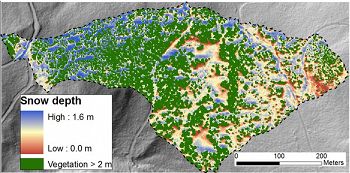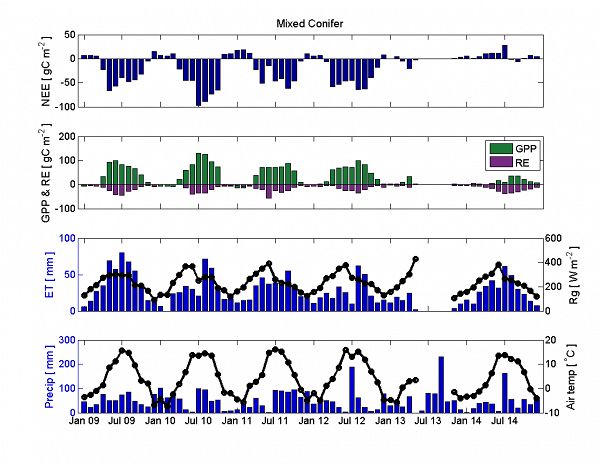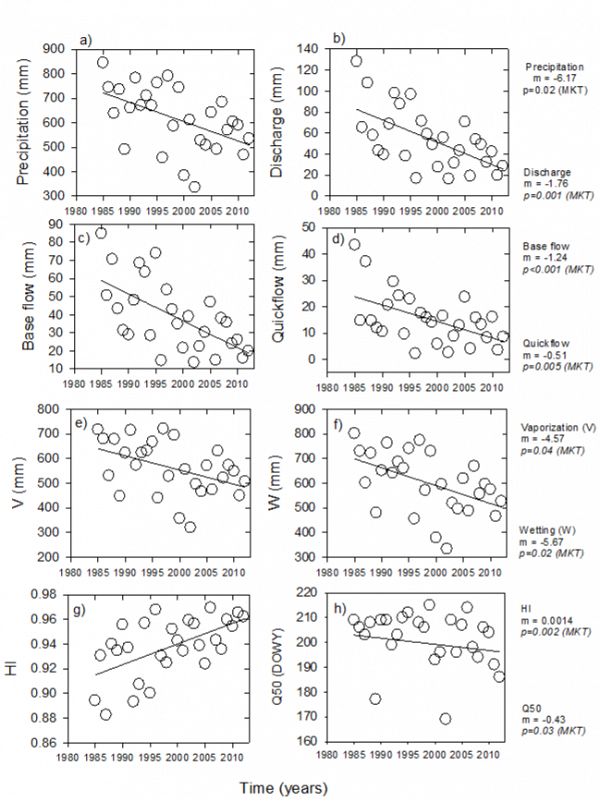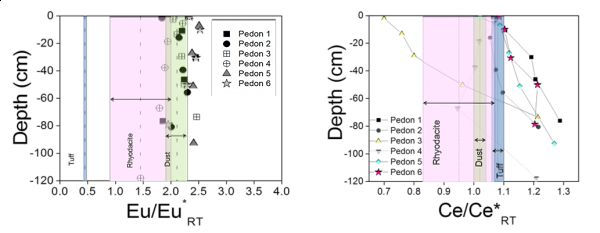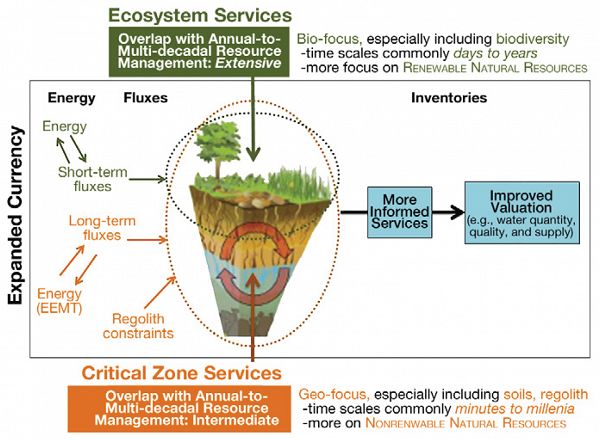Annual Findings
Selected highlights of results from Catalina-Jemez CZO observations and modeling are briefly presented here and they are updated periodically. It should be noted that many of these results are preliminary and have not yet been published in peer-reviewed journals. Annual reports are also uploaded to the website and can be downloaded from Reports/Proposals.
Snow depth from LiDAR flights in our intensive mixed conifer zero order basin reveals structure associated with vegetation and aspect which together protect snow surface from solar radiation and minimize sublimation over winter (Mussleman et al. 2008, Veatch et al 2009. Rinehart et al 2009, Gustafson et al. 2010)
The full set of Catalina-Jemez CZO findings are presented in our annual reports that are available as PDF downloads from the links below.
Selected findings from 2014-2015:
Eddy covariance flux tower data from the mixed conifer site in JRB shows a large reduction in ecosystem C uptake following the stand replacing wildfire in July 2013 (Litvak et al.).
Decrease in overall precipitation in the SCM in the past two decades was largely driven by decreases in winter precipitation (Papuga et al.).
Precipitation and water partitioning at the upper Jemez River catchment scale. There was a significant decreasing trend quantified by the Mann-Kendall test (MKT) in the Jemez River Basin precipitation and all the components of the water partitioning. For instance, precipitation at the catchment scale decreased during the last three decades at a rate of 6.17 mm per year and discharge at 1.76 mm per year. From 1984-2012, Horton index (HI) increased as the basin dried up, indicating that vegetation used more of its available water with increasing water limitation in the basin. Q50 indicated that discharge is occurring 4.3 days earlier per decade (Zapata-Rios et al., 2015).
Rare earth elements, including europium (Eu) and cerium (Ce), represent useful tracers of biogeochemical weathering. Shown here are Eu and Ce anomalies for six pedons in the Mixed Conifer ZOB (JRB). Eu anomalies indicate importance of dust inputs to ZOB soils, whereas Ce anomalies are consistent with depth dependent variation in redox status (Vazquez-Ortega et al., 2015).
Critical zone services provide context, constraints, and currency that enable more effective management and valuation of ecosystem services (Field et al., 2015).
Eddy covariance flux tower data from the mixed conifer site in JRB shows a large reduction in ecosystem C uptake following the stand replacing wildfire in July 2013 (Litvak et al.).
Decrease in overall precipitation in the SCM in the past two decades was largely driven by decreases in winter precipitation (Papuga et al.).
Precipitation and water partitioning at the upper Jemez River catchment scale. There was a significant decreasing trend quantified by the Mann-Kendall test (MKT) in the Jemez River Basin precipitation and all the components of the water partitioning. For instance, precipitation at the catchment scale decreased during the last three decades at a rate of 6.17 mm per year and discharge at 1.76 mm per year. From 1984-2012, Horton index (HI) increased as the basin dried up, indicating that vegetation used more of its available water with increasing water limitation in the basin. Q50 indicated that discharge is occurring 4.3 days earlier per decade. (Zapata-Rios et al., 2015).
Rare earth elements, including europium (Eu) and cerium (Ce), represent useful tracers of biogeochemical weathering. Shown here are Eu and Ce anomalies for six pedons in the Mixed Conifer ZOB (JRB). Eu anomalies indicate importance of dust inputs to ZOB soils, whereas Ce anomalies are consistent with depth dependent variation in redox status. (Vazquez-Ortega et al., 2015).
Critical zone services provide context, constraints, and currency that enable more effective management and valuation of ecosystem services (Field et al., 2015).
Explore Further
